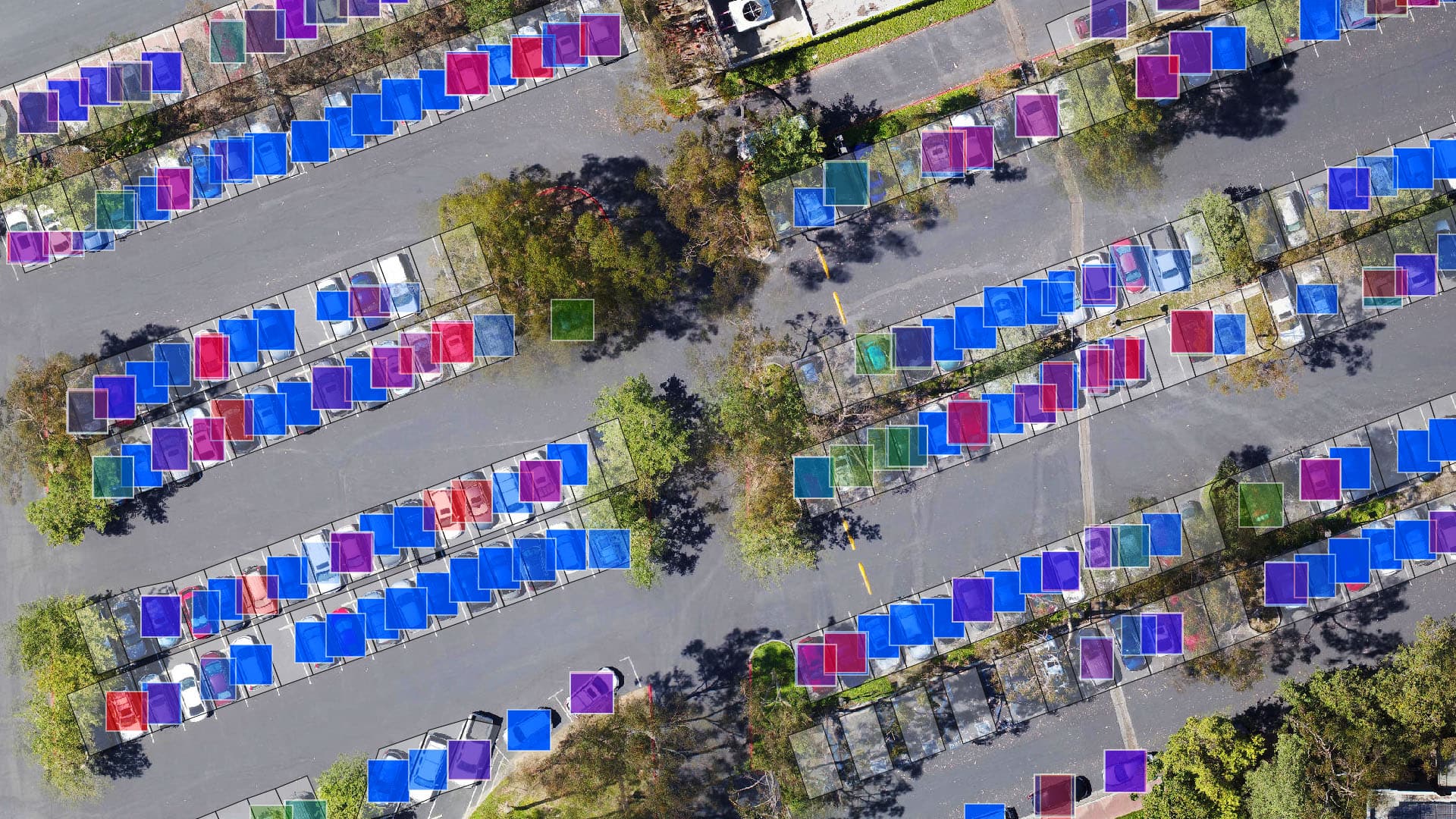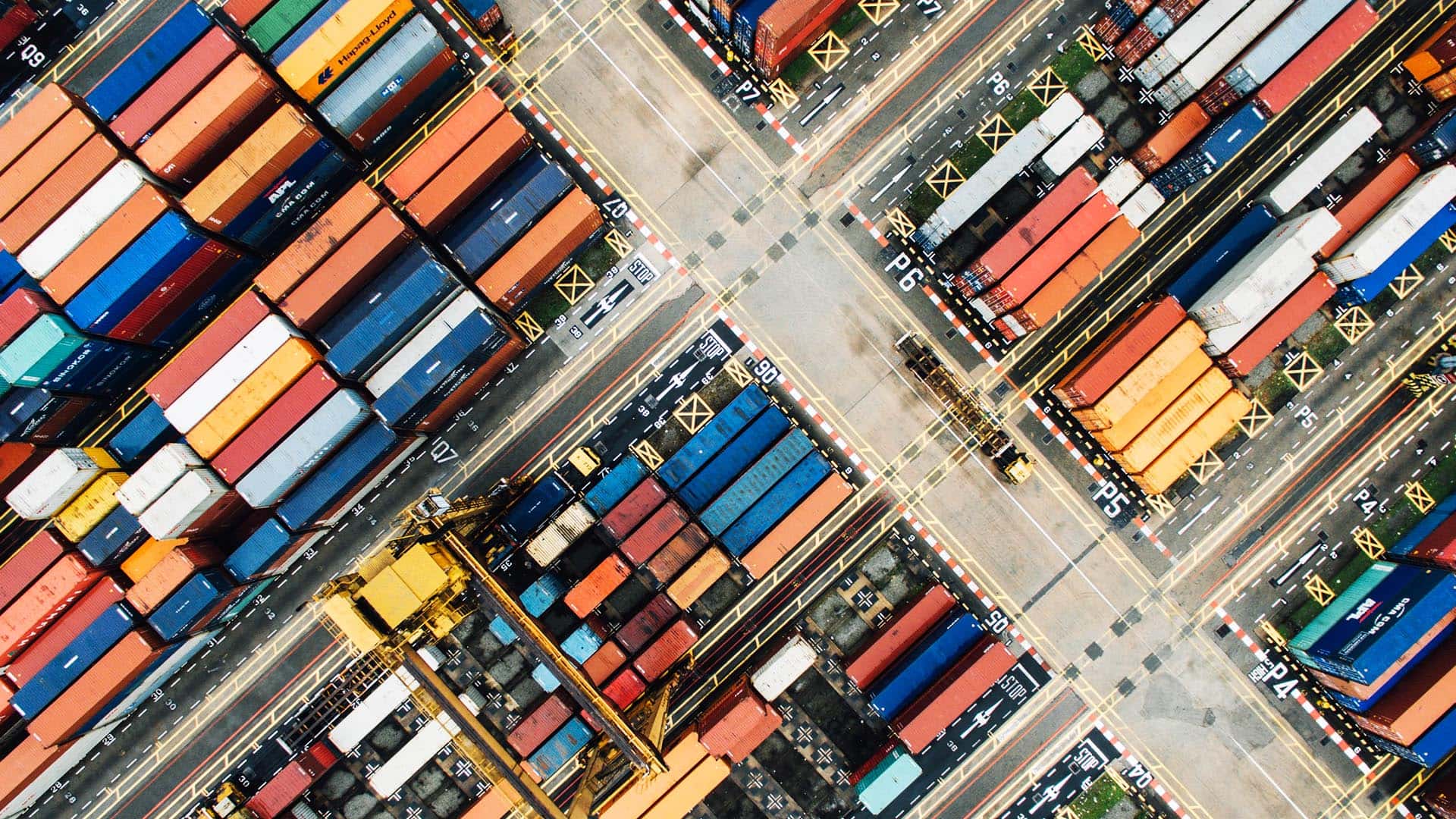Inside the skunkworks of the Fortune 1000, data scientists are using artificial intelligence and location intelligence to change the very nature of business. In the decade ahead, these two technologies will transform the way businesses devise strategy, analyze competitors, and engage customers.
Artificial intelligence (AI), perhaps the most-discussed tech innovation in recent years, shows nearly boundless potential, yet stokes trepidation among some business executives. Best viewed as a basket of capabilities ranging from pattern recognition to behavioral interaction to prediction, AI augments a company’s ability to spot trends and make quick, informed decisions.
Location intelligence brings context to AI’s findings—grounding data in time and place. Location intelligence shifts AI from the realm of science into the practical world of business strategy. In this NextTech, we’ll investigate how companies are using AI and LI to assess long-term investments and manage customer expectations in real time.
(Explore this e-book for a closer look at AI’s business use cases.)
Business Planning with AI and LI
Business executives have long relied on AI’s ability to detect objects in images. Now they’re using location intelligence as a companion technology to uncover additional data.
Hedge funds catalyzed an imaging space race, paying top dollar for satellite photos that revealed how many customers were visiting major retailers, for instance, or how much activity global ports experienced from week to week. With that information, investors made millions on stocks and other securities.
Now that imagery is more accessible and technologies like AI and geographic information systems (GIS) are mainstream, commercial companies have joined the quest for deeper knowledge, with some running well ahead of the pack.
One use case—the analysis of parking lots—has evolved from tabulation to extrapolation. Business planners no longer simply count cars to gauge the suitability of a business location or to monitor a competitor’s performance. Now they analyze who those shoppers might be—all with the help of AI and location intelligence.
The dashboard below shows a simplified view of this work. The AI model has separated sedans from pickups and other kinds of vehicles—factors that can be used to infer the demographics of shoppers and understand the habits of those groups, without using personally identifiable information.
GIS adds the context of location and time, allowing companies to monitor how visitor traffic fluctuates throughout the day, exposing insight that can influence staffing, promotional campaigns, and more.
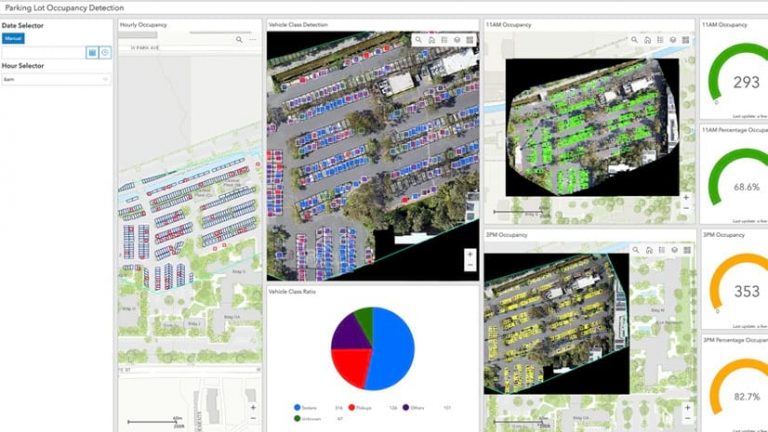
Some skunkworks teams are getting more granular as they plan business operations. In certain cases, executives and data scientists are gauging customer satisfaction through drive-offs. That happens when a would-be customer encounters a crowded parking lot or a long drive-through line and decides to take their appetite and business elsewhere.
With many businesses creating drone imagery of their own and satellite companies on the verge of supplying high-resolution imagery at 20-minute intervals, hedge funds no longer have privileged access to overhead intelligence.
Planning Investments with Deep Learning and What-If Scenarios
Ironically, in a digital economy, the physical connection between business and customer may be more important than ever. Consumers expect the speed of digital transactions to be mirrored in the physical world, with products and services delivered quickly and available for pickup in near real time. Executives who plan stores, restaurants, warehouses, and product pickup centers stand to gain from creative use of AI and location intelligence.
In one example featured in the video below, a deep learning model makes more than 32,000 calculations in less than a second to reveal how accessible business locations are to thousands of customers. The analysis calculates several important factors, including the time it would take for someone to reach the business, as well as the demographics of the area where that person lives.
Conducting such a complex analysis on the fly is only possible through big data computing, deep learning algorithms, and location intelligence technology. A modern GIS specializes in such scenarios.
In the video below, Esri’s Witt Matthot explains how this form of business planning plays out.
Managing Customer Expectations in Real Time
When planning a business built on customer interaction—whether that’s a customer visiting a store or a business delivering goods and services to the customer—efficiency directly impacts customer loyalty and profits.
More than half of consumers say they’ll switch to another retailer if it offers quicker delivery, according to a 2019 Capgemini report. Twenty percent say they’ll abandon a brand if delivery service is not provided.
That’s why visibility into the delivery chain is crucial for customer-facing businesses.
In the video, customers are heading to a store to pick up orders—that might be coffee, a trunk’s worth of groceries, or the latest fitness tracker. With a dashboard of their real-time locations, the business can manage its operations effectively, ensuring that imminent arrivals get expedited orders and slower movers are queued up for later fulfillment.
The same capability can work just as effectively in reverse. For instance, an operations center might use a similar dashboard to track employees making dinner deliveries, or field technicians heading to service calls. At the heart of that real-time view is an intelligent location engine boosted by AI, making complex calculations easy to understand.
Imagine a dashboard that tracks drone deliveries instead of people. That level of customer interaction is already upon us, and savvy executives are using it for business advantage. As customer interactions change, the technology to plan and manage those interactions is evolving too, providing the insight and location intelligence needed to make profitable decisions.
The Esri Brief
Trending insights from WhereNext and other leading publicationsTrending articles

December 5, 2024 |
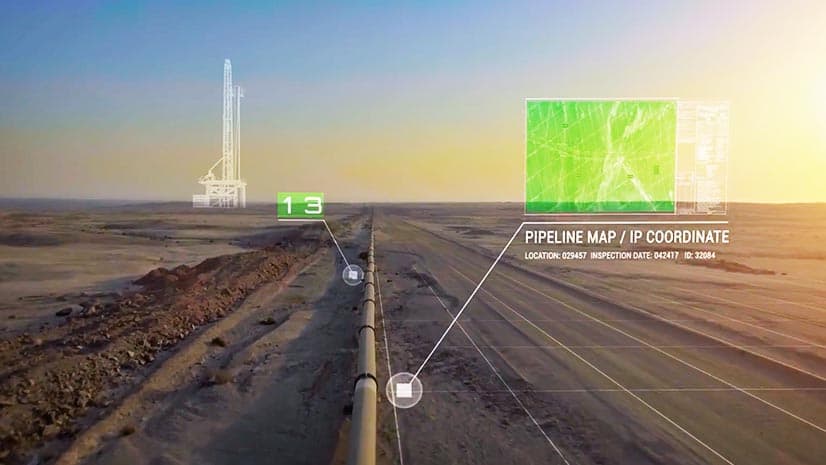
November 12, 2018 |
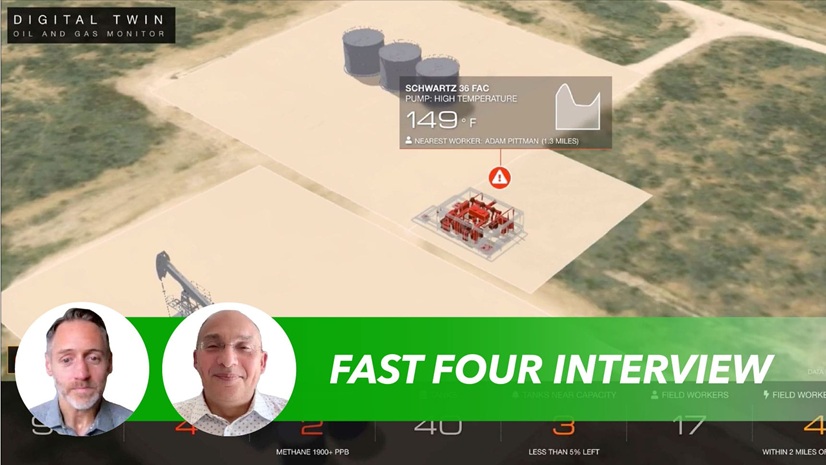
November 24, 2025 | Multiple Authors |

July 25, 2023 |
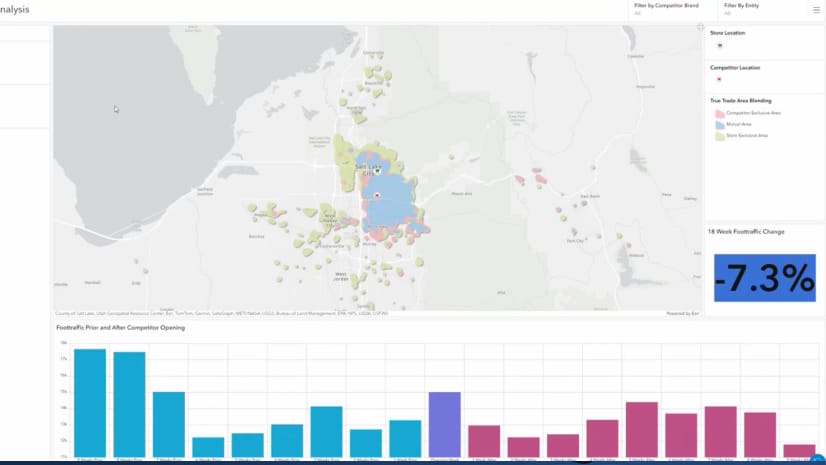
November 18, 2025 |

February 1, 2022 |
